#Lugo Cathedral
Explore tagged Tumblr posts
Text
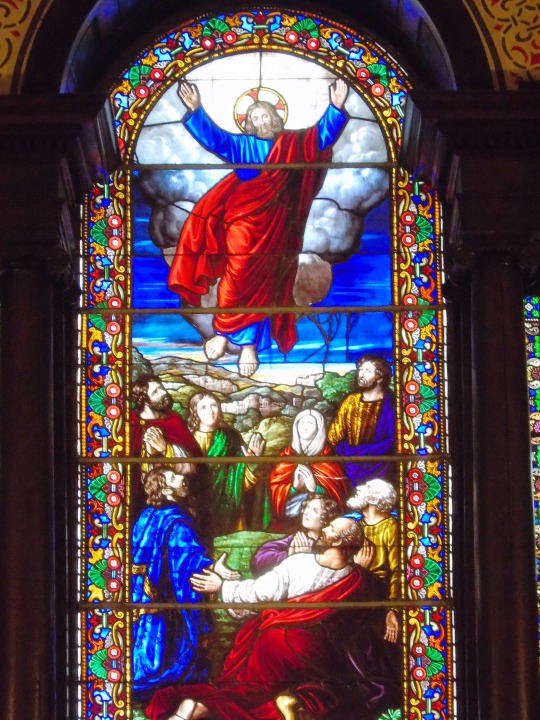
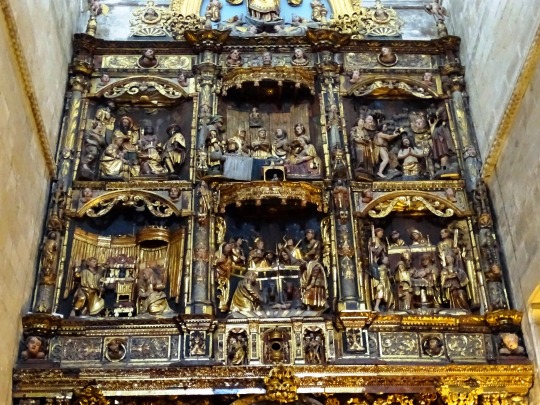
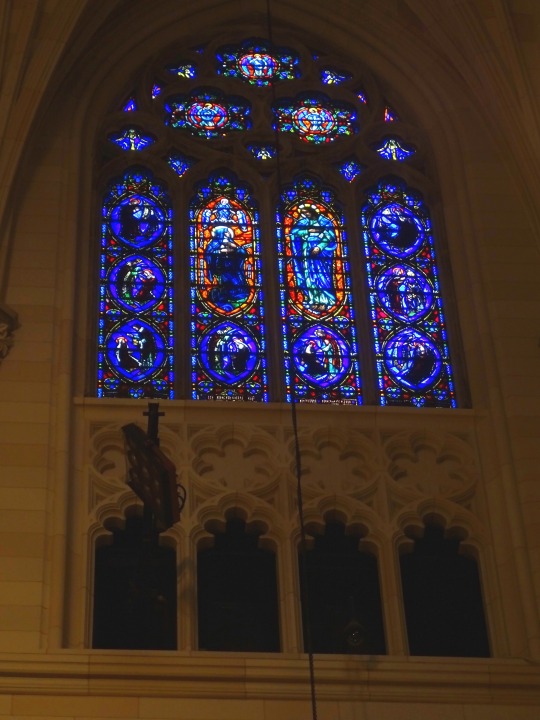
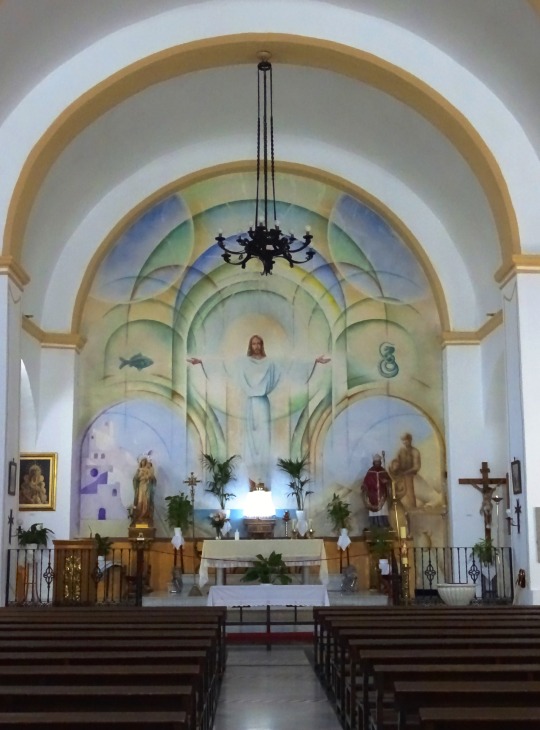
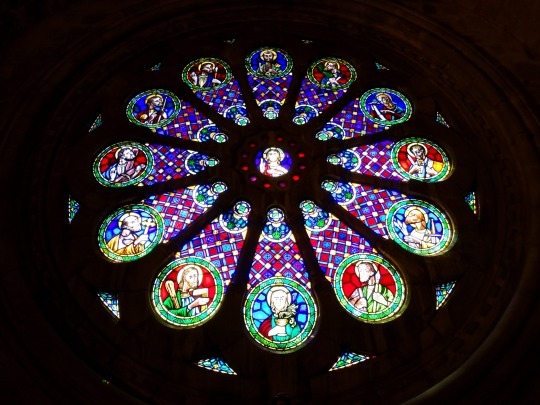
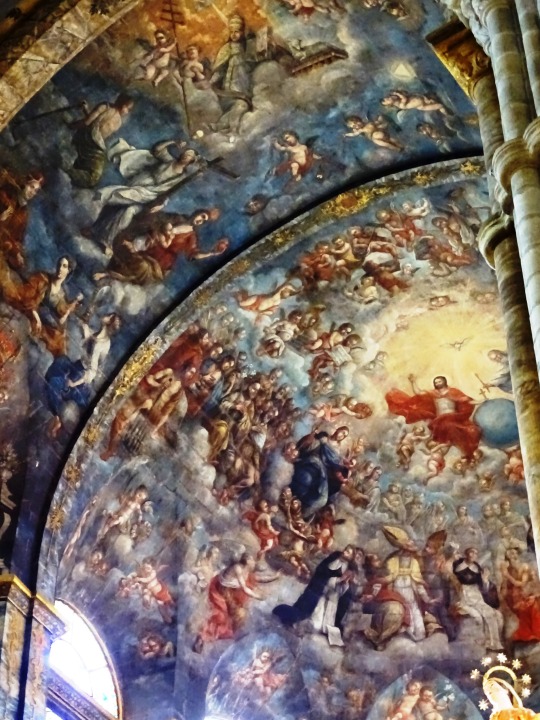
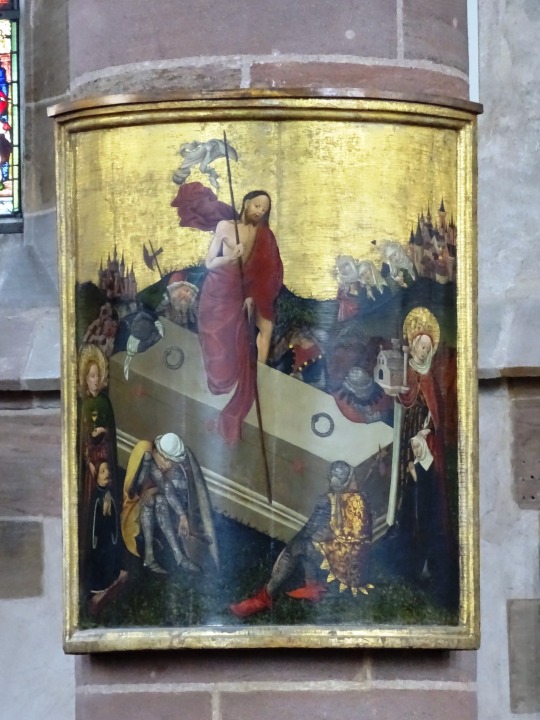
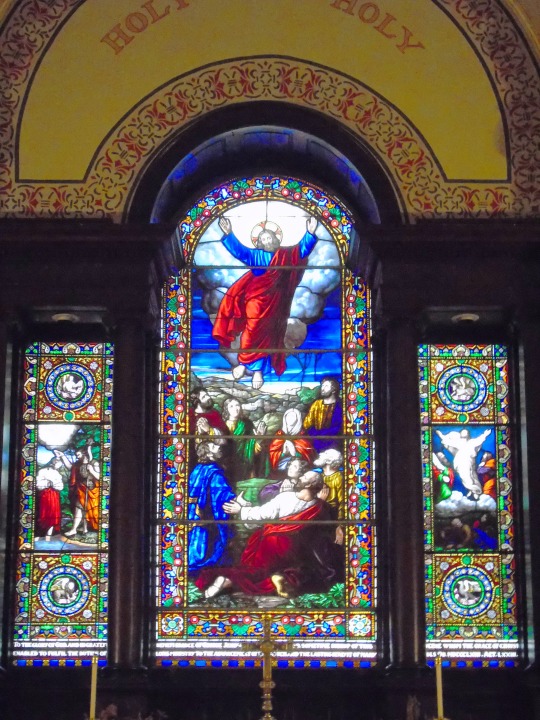

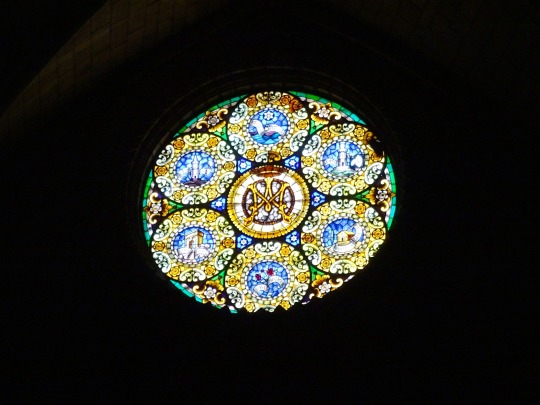

Ascension Day
We commemorate Jesus Christ’s ascension into heaven (as per Christian belief) by celebrating Ascension Day, which occurs on the Thursday, which is 40 (or 39) days after Easter. This year, it will take place on May 9. Known by multiple names — The Feast of the Ascension, The Ascension of Jesus, Ascension Thursday, Holy Thursday, or Solemnity of the Ascension of the Lord — this is a Christian holiday that doubles as a public holiday in many countries like Austria, Belgium, Denmark, Germany, France, Switzerland and more.
History of Ascension Day
One of the earliest Christian festivals, Ascension Day marks the end of the Easter season. This event is celebrated primarily by Catholics and Anglican Christians; most Protestant churches do not follow this tradition anymore. The date, too, differs in different geographic locations. Western Churches prefer to use the Gregorian calendar for calculating this date, while many Eastern Orthodox Churches calculate this date according to the Julian calendar. As a result, their celebrations occur at a later date than the Western event.
As per the New Testament in the Bible, after Jesus Christ’s crucifixion on Good Friday, he was resurrected from the dead in three days, on the day we know as Easter Sunday. For 40 days after this, he stayed with his Apostles (the primary disciples of Christ) to instruct them on how to carry out his teachings. As the Bible says, at the end of day 40, Jesus Christ and his disciples went to Mount Olivet (or the Mount of Olives), near Jerusalem. After asking them to stay, Christ then ascended to heaven to take his seat at the right hand of God, under the gaze of his disciples. To Christians, the ascension signifies that Christ completed his work on Earth and allowed him to prepare a place for his followers in heaven.
Initially a part of Easter celebrations, this day was later separated from Easter, along with Pentecost. Celebration of Pentecost ends the cycle of Easter-related events in the Christian calendar.
Ascension Day timeline
68 A.D. The Tradition Begins
Ascension Day begins to be observed, albeit with two other holidays — Easter Sunday and Pentecost.
300 A.D. Ascension Day Develops As A Separate Tradition
A decree declares this celebration now must be observed separately — it is moved to 40 days after Easter.
385 A.D. First Written Evidence Appears
We see the very first piece of written evidence that the Ascension Day Feast is celebrated.
5th century Ascension Day Starts Appearing In Art
Christian art showcases this holiday.
6th century Art Begins To Reflect Different Versions
Syria develops a different version of the Ascension, which is later adopted by Byzantine art.
18th century Germany Celebrates Father's Day
Ascension Day coincides with Father's Day in Germany — they celebrate Jesus returning to the Holy Father.
19th century Germany Celebrates With Colourful Parades
To replicate the way the Apostles walked with Jesus, Christians begin to host colorful parades as a commemoration.
How To Observe Ascension Day
Go to church
Attend church processions
Listen to hymns
Learn how your local church celebrates this day. Take some time to attend a Mass or Christian church service. Clarify the details before you go, as these services differ based on whether the church is Protestant or Catholic.
Tradition says this holiday is observed by a three-day procession, then the feast itself, which includes a procession of torches and banners to symbolize Christ’s journey to the Mount of Olives and entry into heaven. While your local church might not have such grand festivities, find out if they are still carrying out a procession.
Listening to hymns is a traditional part of Ascension Day celebrations. A medley of these religious songs can have you humming along for days. Even popular artists have been known to hum a hymn or two over the years. Check out Carrie Underwood’s ‘Something In The Water,’ or U2’s ‘Where The Streets Have No Name,’ or even John Legend’s ‘Preach.’
Facts About Ascension Day
In Sweden, people go on early morning walks
The British celebrated by 'beating the willow'
Welsh people don’t work on this day
Portugal celebrates by keeping wheat in their houses
Indonesia has a public holiday on Ascension Day
Many people go out into the woods at 3 AM or 4 AM to hear the birds at sunrise, believing that hearing a cuckoo from the east or west brings them good luck — this activity is called ‘gökotta.’
In the olden days, as young boys were driven along the parish boundaries, they were beaten with willow branches to drive away evil.
It is more than a holiday celebration in Wales — Welsh people believe that it is unlucky to do any work on Ascension Day.
Traditionally, rural Portuguese households keep wheat in their homes throughout the coming year — this day is associated with peace and prosperity and, to them, wheat symbolizes prosperity.
Despite Christianity being a minor religion in Indonesia, Ascension Day is designated as a public holiday.
Why Ascension Day Is Important
It is an opportunity for reflection and to gain inner peace
We learn about Christian traditions
It helps us expand our cultural horizons
Instances, where we can simply sit, reflect, and learn the true meaning of peace, are rare in our busy worlds. This is why we recommend holding onto such chances with both hands. Ascension Day church services center around this theme. If you are not a religious or church person, simply take a moment to sit by yourself and reflect on your journey so far and how you would like to continue. There’s no better way to celebrate this day than by centering yourself and your thoughts.
Expanding our knowledge is good for us. Plus, learning about Ascension Day not only helps us expand our store of general knowledge, but also inspires us to observe some of the traditions.
Such traditions have been prevalent for a long time, and have taken on varying degrees of importance around the world. Even festivities change as per the customs of a certain region. Learning more about these traditions changes our views of cultures and gives us extended knowledge of people from other nations.
Source
#Mojácar Pueblo#Church of Santa Maria#Lisbon Cathedral#Lisbona#interior#stained glass window#Ascension Day#Auffahrt#long weekend#9 May 2024#39 days after Easter#Saint Mary's Cathedral#Lugo Cathedral#Spain#Portugal#Holy Trinity Anglican Cathedral#Québec#Quebec City#Canada#Germany#Stadtpfarrkirche Unserer Lieben Frau#Nuremberg#Nürnberg#Solsona Cathedral#St. Patrick's Cathedral#Manhattan#New York City#USA#architecture#original photography
10 notes
·
View notes
Text
Spain 2023
8/7/23
What an amazing day! Set off from Lugo after breakfast for 1 hour drive to Santiago de Compostela - one of the great pilgrimage sites in the world and the 3rd most revered Christian site after Jerusalem and the Vatican in Rome. The cathedral itself was truly spectacular with a dazzling golden altar and huge decorated columns rising high to the ceiling. It is reputed to be the burial place of St James and catholics queue for ages just to be able to touch the base of his statue’s cloak. As Methodists we didn’t see the point.
It was also fascinating to see many of the pilgrims that had walked from various places to the cathedral - we had passed hundreds in the car on the way. Most do one of the shorter walks - still over 100kms- but some do the whole journey from the Pyrenees, over 800 kms. I can confirm that 2785 pilgrims arrived today!!
After the visit, which was free by the way, we enjoyed lunch in one of the many restaurants surrounding the cathedral and then strolled around the narrow streets enjoying the ambiance and an ice cream!
I know that Christine and John enjoyed their visit here and I’d thoroughly recommend it to anyone else!
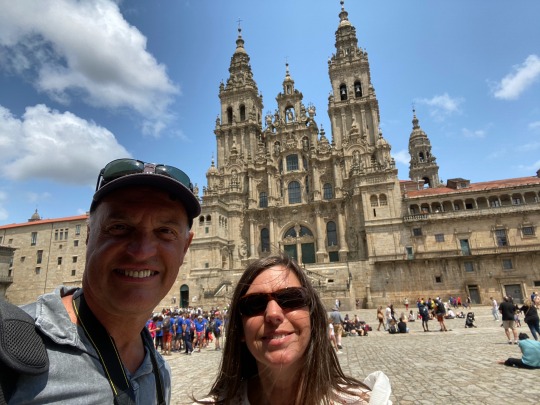
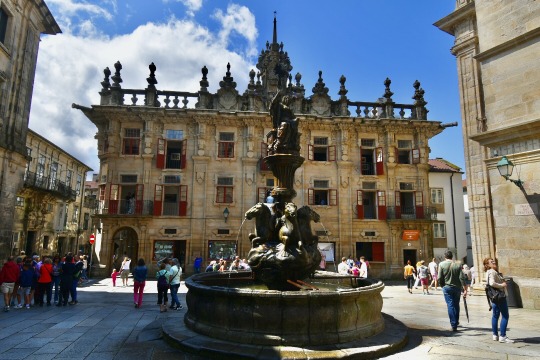
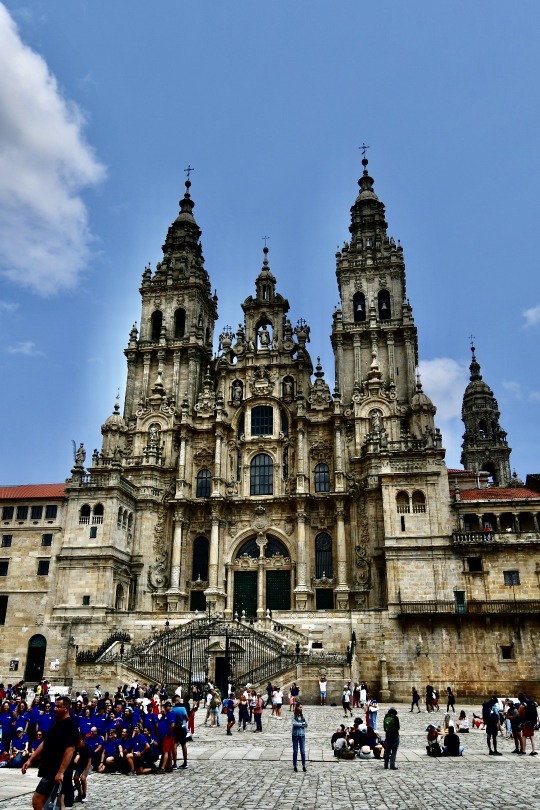
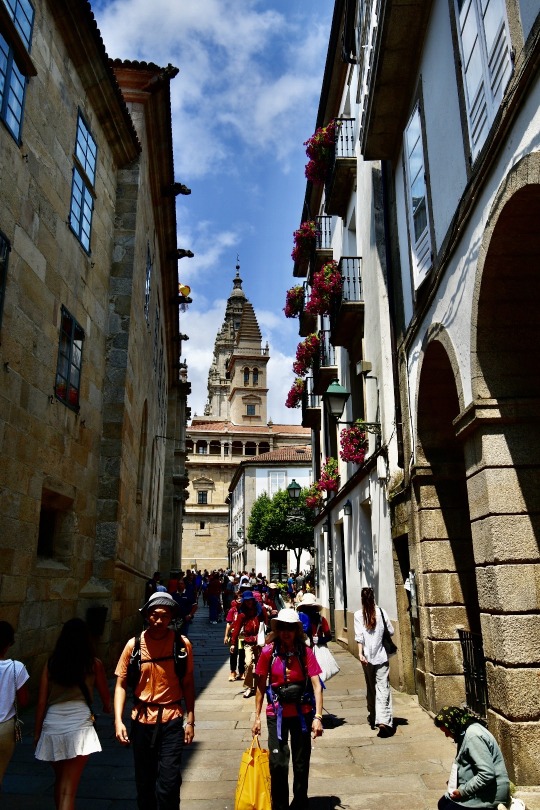
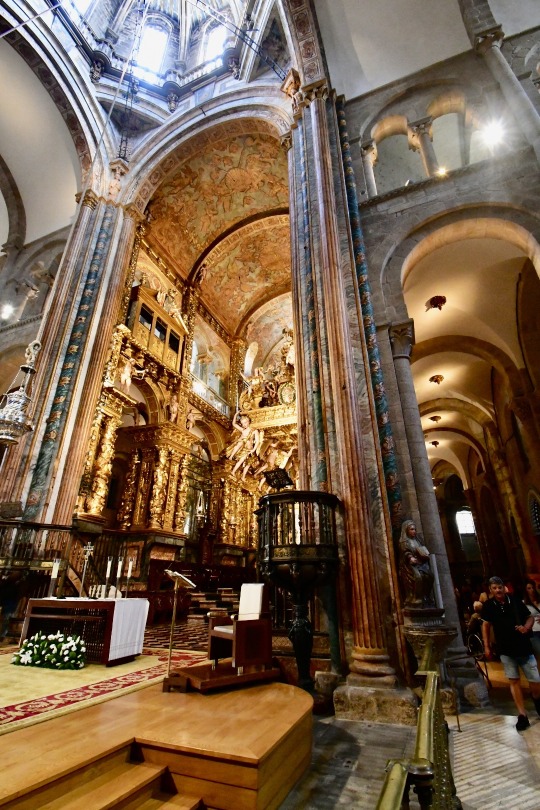
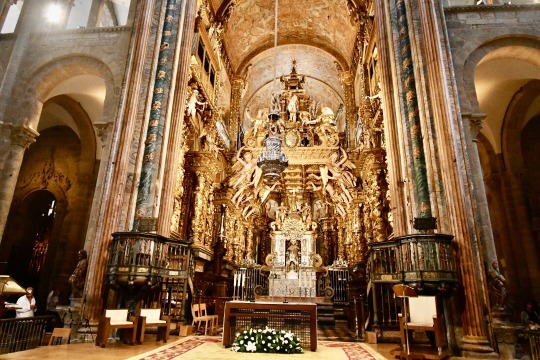

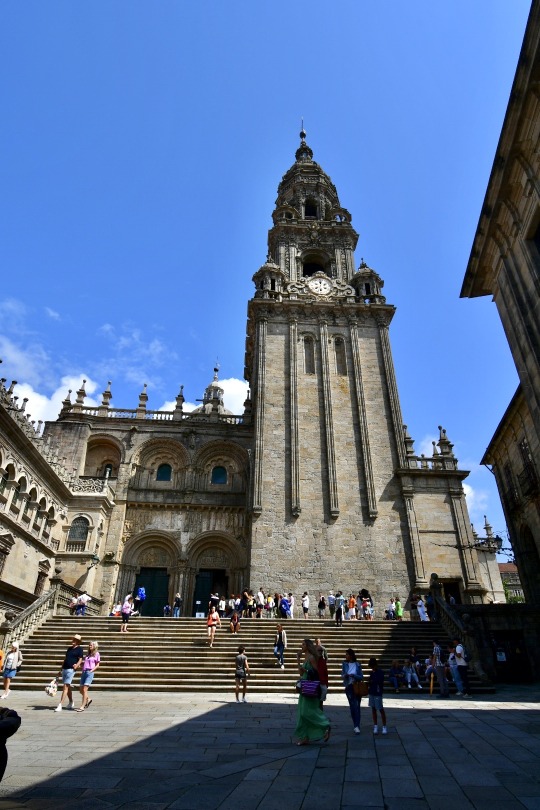
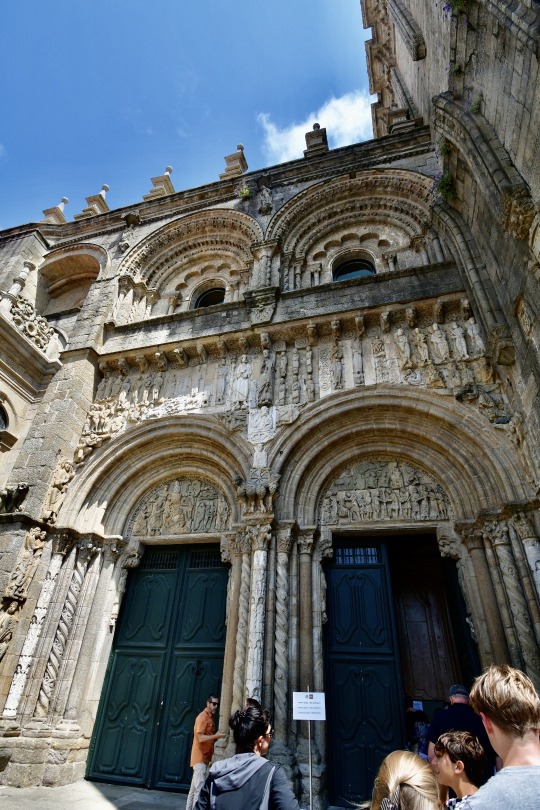
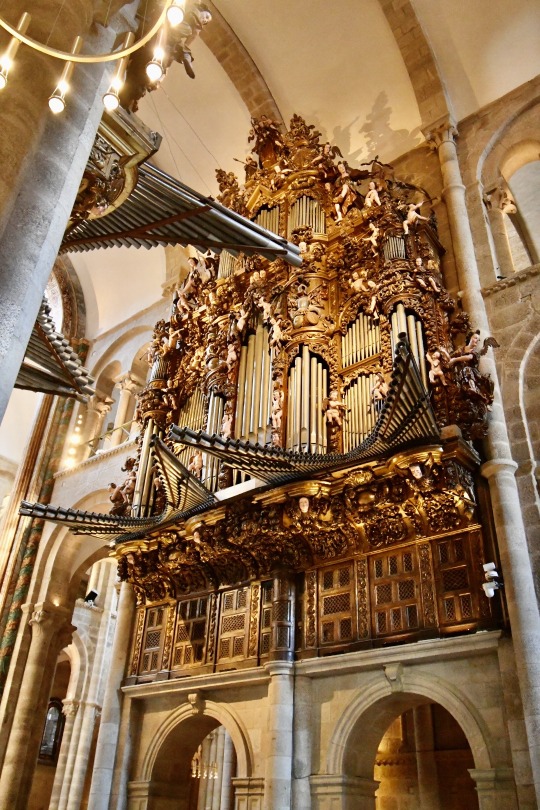
6 notes
·
View notes
Text
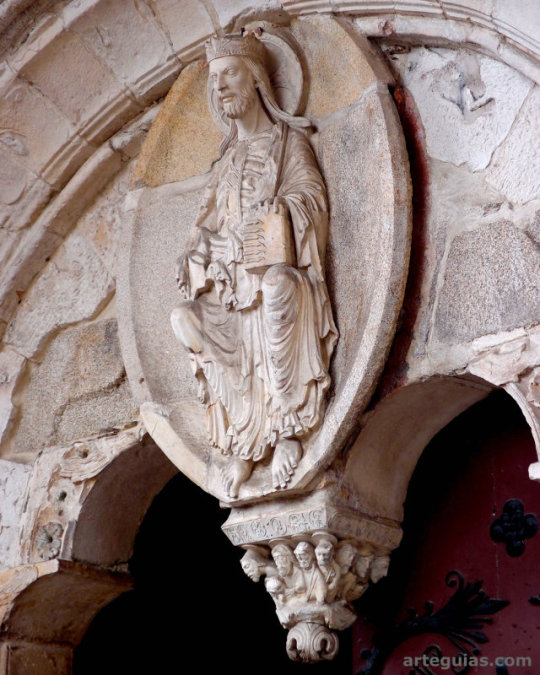
Cathedral of Lugo, Spain
via carloskaplan
3 notes
·
View notes
Text

Cathedral Beach, Ribadeo, Lugo, Galicia, in Spain.
3 notes
·
View notes
Text
Best Hotels in Mondoñedo, Lugo, Galicia, Spain
Mondoñedo, a captivating town nestled amidst rolling hills in Galicia, Spain, beckons travelers with its rich medieval heritage, charming old town, and tranquil atmosphere. Nicknamed the “Spanish Jerusalem” for its seven historic churches, Mondoñedo boasts a UNESCO-protected cathedral, a vibrant market scene, and a delectable culinary scene focused on fresh, local produce and regional…
View On WordPress
0 notes
Text
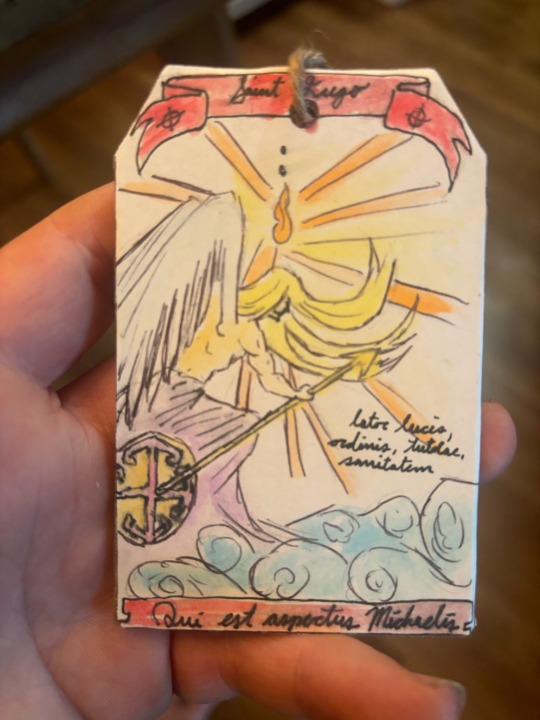
Hey hey,
I have been working on reimagine my spirituality and hope to be bringing more to this page. It has been a deep dive on overdrive for me into gnostic phenomenon and Christianity’s PAGAN past. There is a LOT of witchy stuff that the early church was into and they got wickedly hypocritical as time went on. I hope to dive into a little bit of that here.
There is a Cathedral Lugo in Spain where a rich tradition of Celtic lore still survives. Back when the church was spreading, it adopted gods of the local traditions…as Pagan as you can get. Here the Celts worshipped Lugh, who is a god of light, healing, poetry, smiths, and many more craftsman. It should be noted that Archangel Michael is also noted for presiding over prayers directed by artisans, craftsman, healers, and is a bringer of light! They also have connections to sailors and are capable warriors. Michael is noted besting Lucifer and Lugh the Fomorians. Two representatives of the Titan-esque unbridled raw power that is seen as destructive.
I put this together for my altar space that I am still putting together, as my original one broke in the move and I am broke so I have to find some cheap way to replace it 😓
See you next time
0 notes
Text
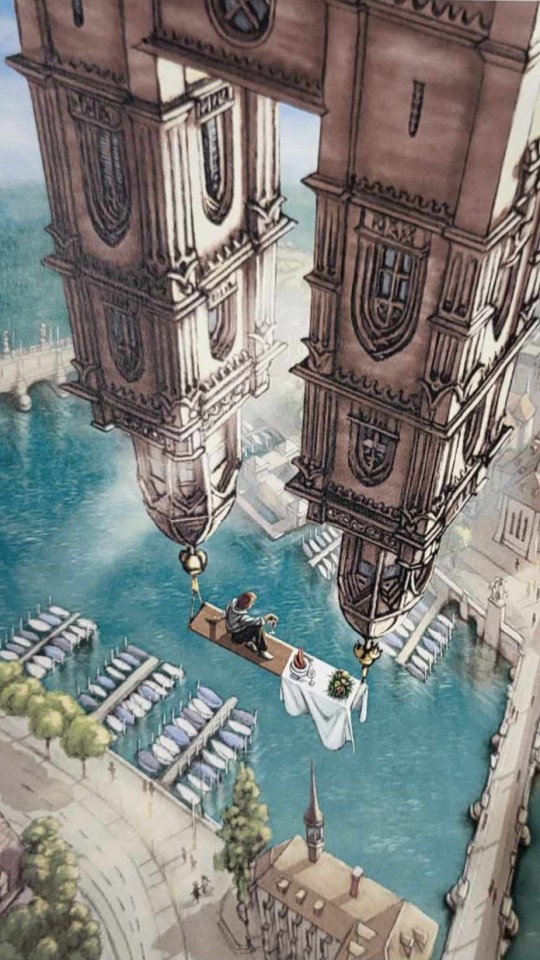
Lugo Hartmann, 2017, THE DINNER UNDER CATHEDRAL. Pencils and digital painting.
Combining observation of familiar architecture and that stir of imagination?
#architecture#urban#painting#fantasy#imaginative#the best combo#lugo hartmann#zürich#it speaks to something in me
1 note
·
View note
Text
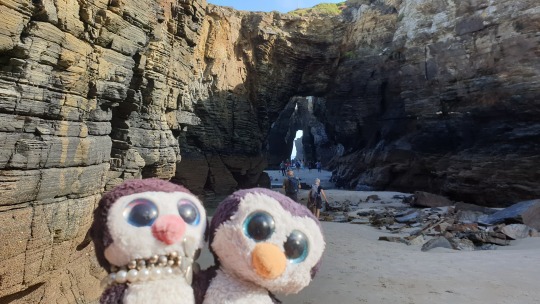
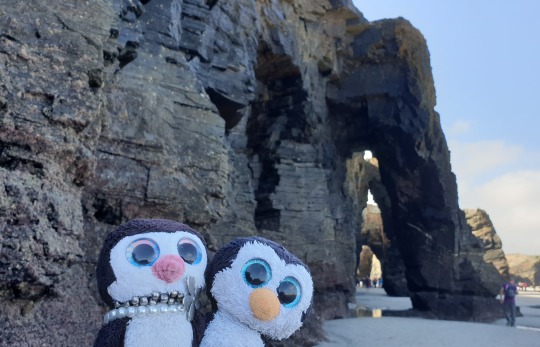
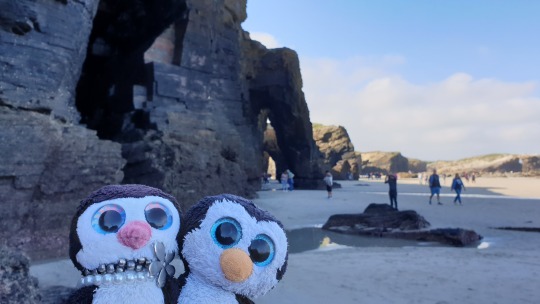



2020/10/08
El nombre de Playa de las Catedrales proviene de la monumentalidad de algunas de las formaciones de las rocas. Parecen las naves laterales de las iglesias góticas que están presentes en las ciudades y pueblos más importantes del Camino de Santiago.
The name of Beach of the Cathedrals comes from the monumentality of some of the rock formations. They look like the lateral naves of the Gothic churches that are present in the most important cities and towns on the Santiago's Road.
Google Translation into French:
Le nom de Plage des Cathédrales vient de la monumentalité de certaines formations rocheuses. Elles ressemblent aux nefs latérales des églises gothiques présentes dans les villes les plus importantes du Chemin de Saint-Jacques.
Google Translation into German:
Der Name Kathedralen Strand leitet sich von der Monumentalität bestimmter Felsformationen ab. Sie ähneln den Seitenschiffen gotischer Kirchen der wichtigsten Städte am Jakobsweg.
Google Translation into Hebrew:
השם קתדרלת ביץ 'נגזר מהמונומנטליות של תצורות סלע מסוימות. הם דומים למעברים של כנסיות גותיות בערים המרכזיות בקמינו דה סנטיאגו.
Google Translation into Hindu:
कैथेड्रल बीच नाम कुछ रॉक संरचनाओं की स्मारकीयता से लिया गया है। वे कैमिनो डी सैंटियागो के मुख्य शहरों में गोथिक चर्चों के गलियारों से मिलते जुलते हैं।
Google Translation into Russian:
Название «Соборный пляж» происходит от монументальности некоторых скальных образований. Они напоминают проходы готических церквей в главных городах на Камино-де-Сантьяго.
Google Translation into Japanese:
カテドラルビーチという名前は、特定の岩層の記念碑性に由来しています。 それらは、カミノデサンティアゴの主要都市にあるゴシック様式の教会の通路に似ています。
Google Translation into Korean:
대성당 해변이라는 이름은 특정 암석의 기념비적 특성에서 파생되었습니다. 그들은 세인트 제임스의 길 ��의 도시들 의 주요 도시에있는 고딕 양식의 교회 통로와 비슷합니다.
Google Translation into Arabic:
يأتي اسم شاطئ الكاتدرائيات من المعالم الأثرية لبعض التكوينات الصخرية. إنها تشبه الممرات الجانبية للكنائس القوطية في أهم المدن على طريق سانت جيمس.
Google Translation into Portuguese:
O nome de Praia das Catedrais vem da monumentalidade de algumas das formações rochosas. Assemelham-se às naves laterais das igrejas góticas que estão presentes nas cidades e vilas mais importantes do Caminho de Santiago.
#PlayaDeLasCatedrales#Ribadeo#Lugo#España#Naturaleza#Nature#Beach#Beauty#Cathedral#CaminoDeSantiago#Travel#Nice#CoupleGoals#PositiveVibes#Plushies#Maharashtra#ペンギン
1 note
·
View note
Text
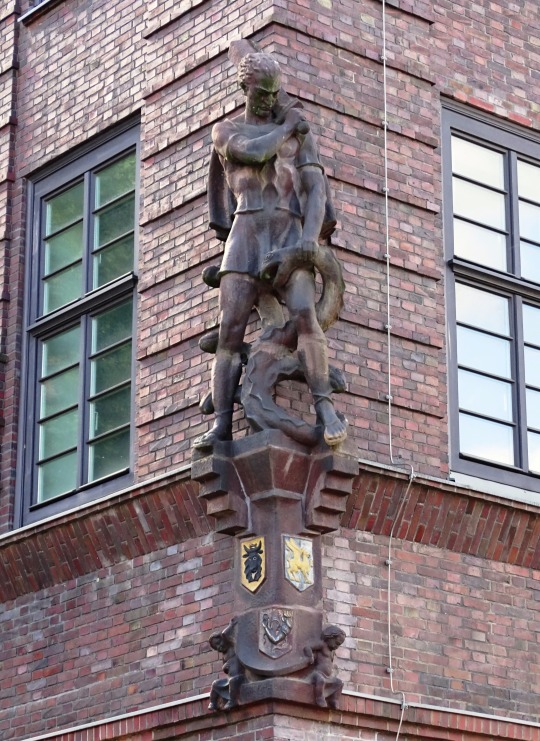
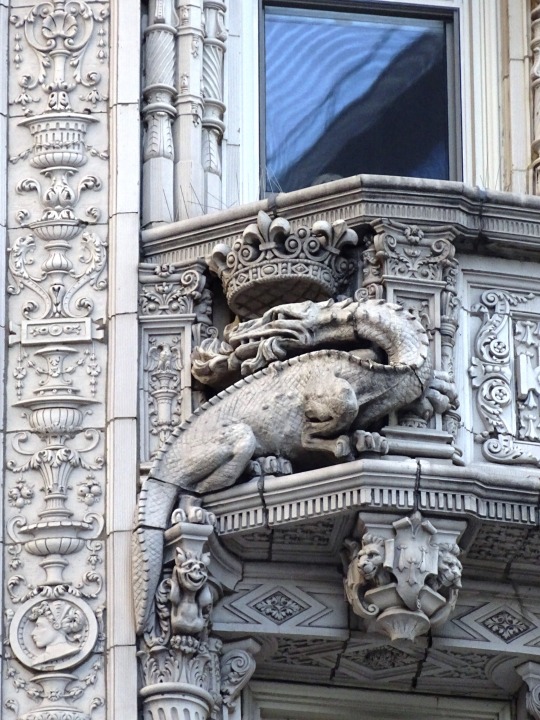
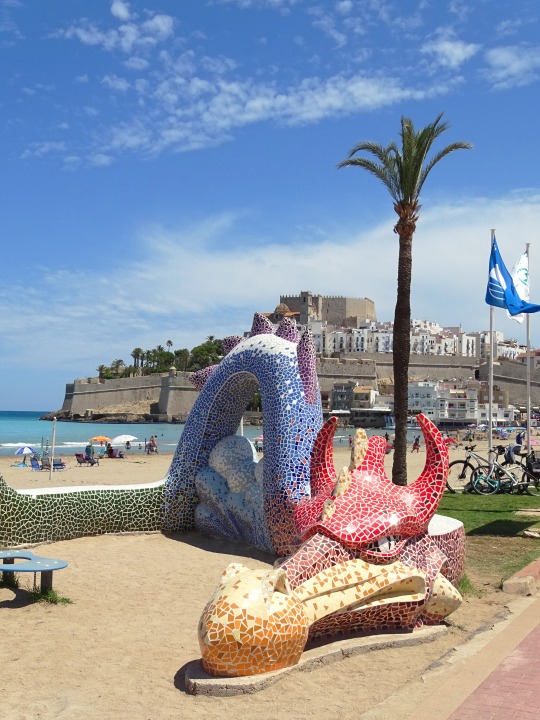


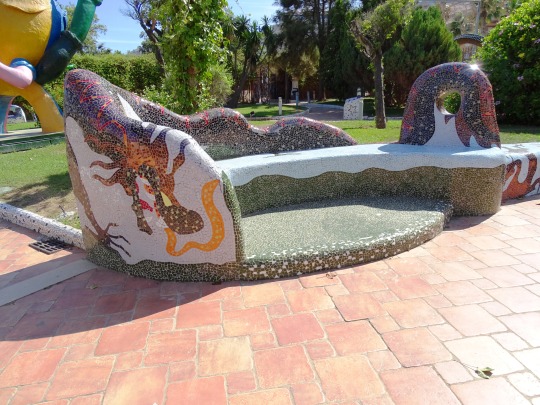


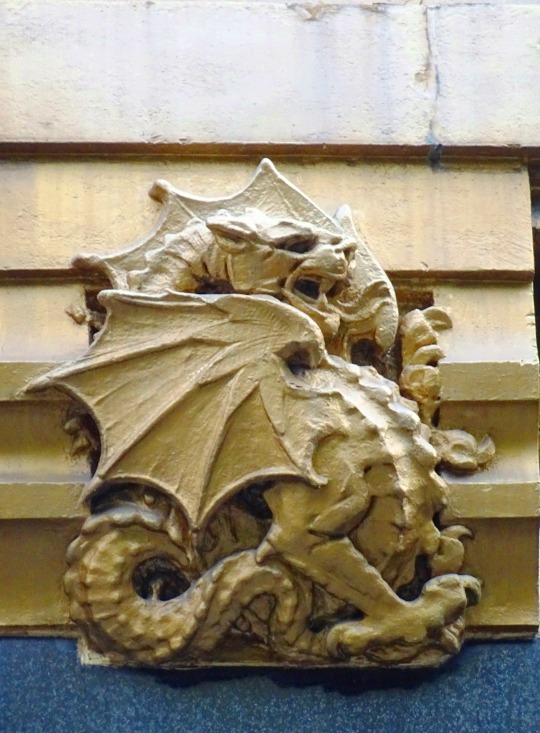

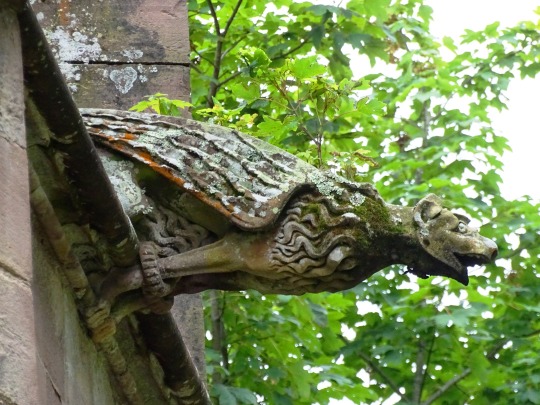
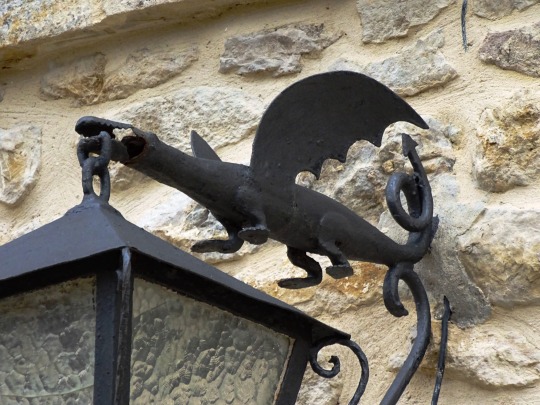
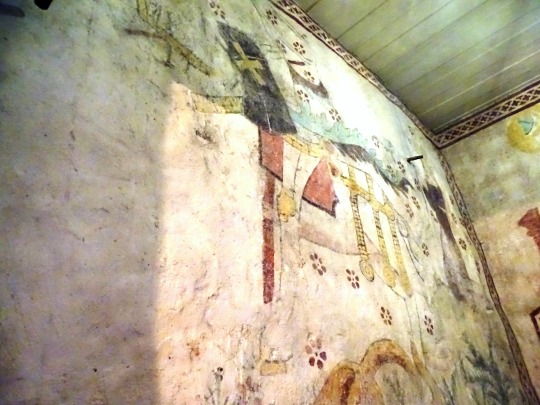


St. George’s Day
Legend has it that St. George slayed a dragon and saved a princess. Today, his bravery is celebrated worldwide, inspiring us to be courageous.
Named after St. George, the patron saint of England, St. George’s Day is a cultural and national holiday marked with events and celebrations, including parades, music, and traditional English food. It is an important part of English culture and heritage, and is a time for people to come together and celebrate their country and its history.
History of St. George’s Day
St. George was a soldier in the Roman army who is venerated as a saint and is the patron saint of England. According to legend, he was a brave and noble knight who fought against evil and injustice. The most famous legend about St. George is that he slayed a dragon that was terrorizing a town and threatening to kill a princess. In the story, St. George rode up on his horse, drew his sword, and killed the dragon, saving the princess and the town.
There are many different versions of the legend of St. George, and it is unclear how much of it is based on fact and how much is myth. However, St. George is still widely revered as a symbol of courage, and his story has inspired many people over the years.
In reality, St. George was likely a real person who lived in the 3rd or 4th century AD. He was born in Palestine and later became a Roman soldier. He is believed to have been martyred for his Christian faith, and was later canonized as a saint.
St. George’s Day has been celebrated in England for centuries, with the earliest recorded celebrations dating back to the 12th century, when he was named the patron saint of England. At the time, St. George was already a popular saint in the Christian world, and he was revered for his bravery and selflessness.
Over the centuries, St. George’s Day became an important holiday in England, and it was observed with various ceremonies and celebrations. In the Middle Ages, St. George’s Day was a major feast day, and people would attend church services, hold parades, and hold feasts in his honor.
How to Celebrate St. George’s Day
St. George’s Day is typically celebrated in England on April 23rd every year, and one of the most common ways it’s celebrated is through parades and processions. These may include marching bands, floats, and groups of people dressed in traditional English costumes. In some places, people may also hold festivals or fairs with food, music, and other entertainment.
If you would like to celebrate St. George’s Day, there are many ways to do so, here are a few ideas:
Fly the Flag
One way to celebrate St. George’s Day is by flying the English flag. This can be done by hanging a flag outside your home or office, or by wearing a flag pin or clothing item that features the flag. This is a simple and visible way to show your support for England and its patron saint.
Attend a Parade
Many towns and cities in England hold parades on St. George’s Day, featuring traditional costumes, music, and activities. This is a fun and festive way to celebrate the day and experience English culture.
Learn About St. George
If you’re interested in learning more about St. George, one way to celebrate is by reading about his life and legacy. You can learn about his history, the legends associated with him and the ways he is celebrated. This can be a more educational way to observe the day.
Cook English Food
Celebrating St. George’s Day could also be an opportunity to try some traditional English food, such as roast beef and Yorkshire pudding, fish and chips, or shepherd’s pie. You can also make your own version of these dishes, or try a recipe for a classic English dessert such as trifle or Bakewell tart.
Source
#St. George#Lugo Cathedral#Saint George Tropoforos Hellenic Orthodox Church#Church of Old Uppsala#Rostock#Comillas#Santillana del Mar#Manhattan#New York City#Alwyn Court#American Radiator Building#stained glass window#summer 2021#2018#original photography#architecture#Germany#Sweden#Spain#tourist attraction#landmark#cityscape#St. George’s Day#23 April#StGeorgesDay#travel#vacation#USA#Peñiscola
2 notes
·
View notes
Text
Spain 2023
10/7/23
Needed umbrellas today - no not for the rain Joan - for the shade! It reached 34c today so we retired early to our monastery and the cooling air of the cloisters! This hotel is in an amazing setting - and everything you could want - except the light switches are very confusing, you can’t work out which way the doors open and you still can’t get an English cup of tea! Guess I’m just not their usual type of customer.
As promised, we spent most of the morning looking around the cathedral which was quite different to those of Santiago and Lugo. This one is famous for its stained glass windows which let in so much light with each one telling a story. It reminded us of the Saint Chapelle church in Paris that we visited last year with Ellie. Really interesting and only 7€ entrance - 6€ for over 65s like me!
As so seriously hot, we actually had lunch inside a restaurant where they had the air conditioning going full blast! Don’t think I’ve mentioned before but we’ve been surprised at how reasonable the cost of eating out is here - £3 to £4 for 2 cappuccinos, £2 for a beer, and cooked lunch today was about £25 for both of us including drinks.
Just sitting on the hotel terrace enjoying a drink and light snack and getting our money’s worth in this place.
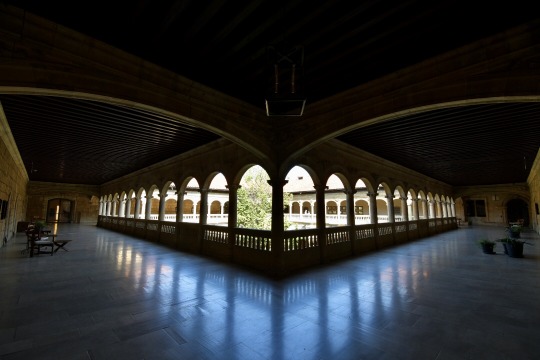


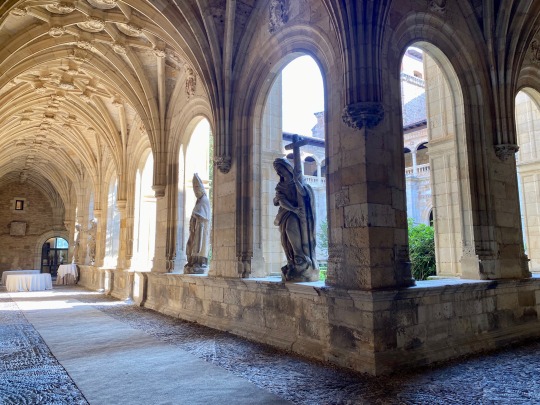

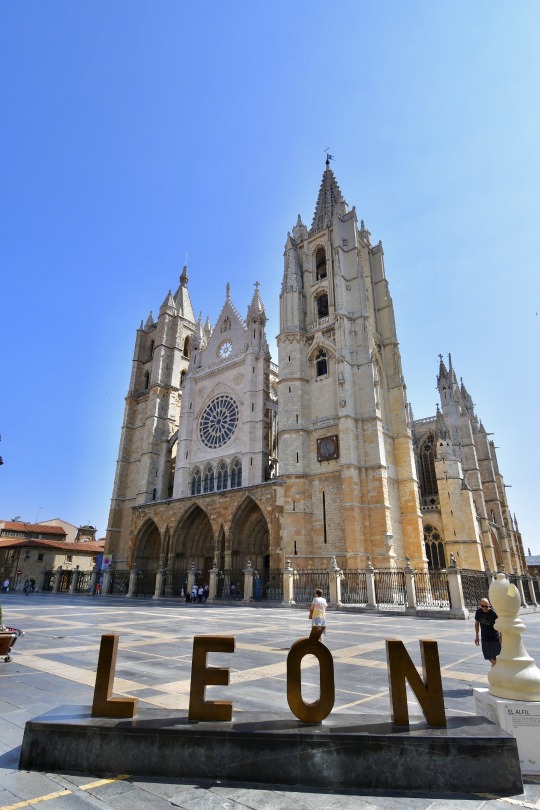




5 notes
·
View notes
Photo

Inside the Cathedral by manuelmillares1
#500px#playa#catedrales#cathedrals#beach#tourism#water#sky#cliffs#sand#galicia#spain#ribadeo#lugo#st
26 notes
·
View notes
Photo

Playa de las catedrales by manuelmillares1
#playa#beach#tourism#catedrales#cathedrals#ribadeo#lugo#spain#galicia#sand#cliff#sky#water#reflection
1 note
·
View note



